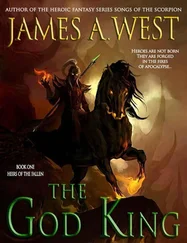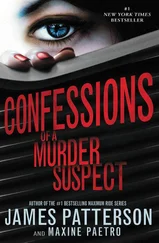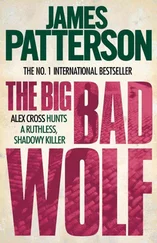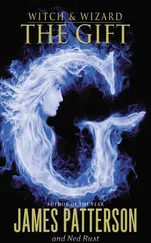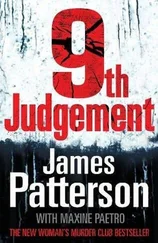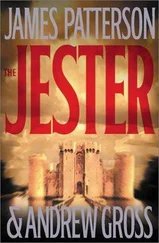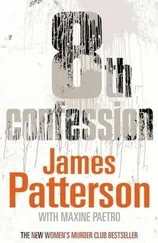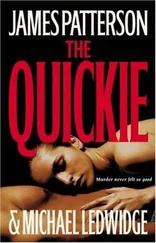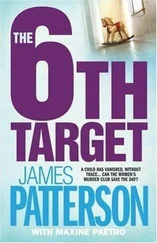A key must have been used, and a key meant that his staff was somehow involved. Damn it!
Betrayal welled up in his throat like bile as he continued pacing through the chambers, appalled by the extent of the theft. All through the day and then into the night, Carter wandered the tomb, returning to the opening every now and then to smoke a cigarette in the fresh air before plunging back inside.
He never stopped racking his brain for some clue he might have overlooked-one that was most likely in plain sight.
He went to bed reluctantly and slept just long enough to realize that he couldn’t sleep anymore.
By first light Carter was back at the tomb, vowing not to leave until he’d solved the heinous crime. He flicked on the light switch and again stepped inside.
Then he stopped.
In his investigation the previous day, Carter hadn’t looked closely at the gate. He had assumed that the robber had a key. He suddenly remembered that the week before, someone had jimmied the gate open and sprung the lock. Nothing had been stolen at the time, and because the gate had shown no signs of significant damage, the matter had been forgotten.
Carter squatted down to inspect the lock. The previous day he had noticed a few scraps of lead paper and resin particles littering the ground and had thought nothing of it.
Now he rolled the resin between his fingers and gave it a sniff. He recognized the scent immediately-it came from the sont tree.
“What would this be doing here?” he said as he scrutinized the substance further. “The resin is the key somehow. But how?”
He studied the lock at eye level. Then he examined the resin.
Soon Carter realized that someone had shaped the resin into a small ball, one identical to the tongue of the padlock. “Ingenious,” he said. “Simple, yet effective. This thief is clever. Almost as clever as I am.”
Now he could imagine what had transpired. The earlier break-in wasn’t a break-in at all but a pretense for snapping the lock and molding the resin to make the lock look like it hadn’t been damaged. The robber then waited until the time was right and returned to the tomb. At that point, giving the lock a couple of good pulls would have been enough to cause the resin to give way.
Carter crept back into the tomb, feverish with anticipation, seeing the crime with new eyes.
His mind flashed back to a foiled robbery attempt some months earlier. A set of footprints had been found at the scene.
There was even a suspect, a man named Mohamed Abd el Rasoul, a local from a family known for generations of tomb robbing. El Rasoul was fond of studying excavations and then making “accidental” discoveries of his own, but the tombs were always looted by the time Carter and his crew were called to investigate. Rasoul constantly walked the line of being suspicious and under suspicion, but no one had attempted to link him to those earlier footprints.
If Carter could just find another set, somewhere in Amenhotep’s tomb, and then match them with el Rasoul, he would have his thief.
So Carter searched the tomb. Within minutes, he had found the footprints of a shoeless man.
Carter gauged the prints with his tape measure. They were the exact size of those found at the other robbery. “Down to the millimeter,” he marveled. “I’ve got you, el Rasoul!”
Carter walked slowly back to the mouth of the tomb. He pulled out another cigarette and lit it, all the while staring out across the Valley of the Kings.
The sound of picks and shovels digging into the desert floor echoed across the valley, as yet another archaeologist searched for some long-lost tomb and the valuable spoils within.
Carter was rightly pleased with himself. How many other men could lay claim to the titles artist, excavator, and detective?
Valley of the Kings
1902
FORTY-THREE.
As Howard Carter stood atop the Theban horn, looking straight down into the Valley of the Kings, that was the number on his mind.
It had rained the night before, a violent colossus of a storm that had literally formed rivers and caused landslides along the hills.
The upper layer of soil had been washed away, making it the perfect place for Carter to be strolling at that very moment. With his eyes fixed on the ground, and the number forty-three rattling around his head, he was scanning the freshly scrubbed earth for a telltale fissure or cleft that might yield a new tomb entrance.
Once again his heart was pounding. He was thinking how much he loved his job and that one day it would lead to great things. It had to. He had paid his dues.
Carter still felt an indescribable power in the Valley of the Kings and believed that the area had a life of its own. He found it alternately spiritual and playful, a mischievous wasteland that continually taunted Egyptologists who believed there was nothing left to discover. Time and again, great explorers had declared that they’d found all there was to find.
And then the valley would reveal another tomb or another cache of mummies, and the frantic spending and digging would resume.
Carter had carefully studied the detailed records of every Egyptologist since Napoleon and his men came through here at the turn of the nineteenth century. He had also studied the pharaohs’ line of succession, comparing their names with the list of mummies that had already been found.
Simple cross-referencing told him that several pharaohs were still somewhere below him in the valley floor, just waiting to be discovered.
So now he gazed out over the valley, wondering about the mysterious forty-three.
Forty-three was not a person’s name. In fact, Carter had no idea what it might be. Tomb discoveries were numbered sequentially, and in the previous three years an astounding ten new tombs had been located by Frenchman Victor Loret. But after finding KV 42 in 1900 and allowing Carter to help him do the major portion of the excavation, Loret had quit the valley.
KV 43 was still out there, waiting for someone to find it.
Carter suspected, sadly, that he would not be that man. The cost of hiring several hundred diggers for a season was more than five thousand pounds sterling. Add to that astonishing sum the cost of a yearly concession, lodgings, food, donkeys, shovels, picks, and wheelbarrows to move the excavated stone, and it was obvious that Egyptology was the calling of the rich. What chance did Carter, the son of a simple portrait artist, have of finding a great pharaoh’s tomb? But still he could dream. And he was here rather than in dreary old England.
Carter stared out at the folds and tucks of the valley, as if merely by looking long enough he would spot some obscure sign of a tomb. Finally, he settled down onto the ground, sitting cross-legged on the only smooth patch of yellow dirt for a hundred yards in any direction. He opened the cover of his sketchbook.
Holding his pencil lightly to the page, then running it over the paper in quick bursts, he drew a simple outline of the valley floor and of the low flat mountains to the west. His challenge, as always, was to somehow capture the peace and grandeur that permeated that place. But for all Carter’s genius as an artist, pencil lines on a piece of white paper could never fully convey the wonders of this magical spot.
There was great history here, if only he could find some of it himself, if only he could find KV 43.
Valley of the Kings
February 1, 1903
CARTER BLINKED RAPIDLY several times as he stumbled out into the pale morning light in this place that he loved. A loyal Egyptian worker, hoping to revive his boss, immediately handed him water and a cigarette.
Читать дальше

